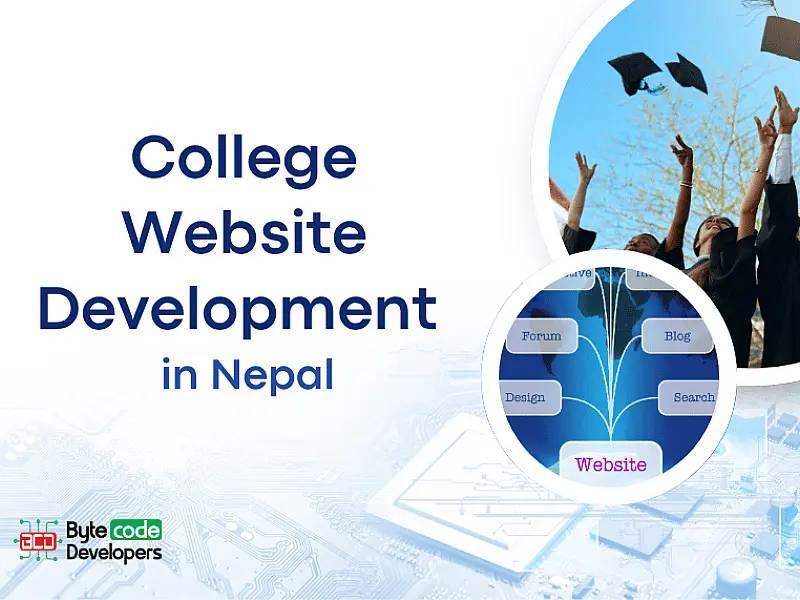
Table of Contents
Why Every College in Nepal Needs a Website
A professional website is no longer optional for colleges in Nepal. It acts as the face of your institution—attracting new students, streamlining communication, and establishing credibility.
Benefits:
- Showcase academic programs and achievements
- Enable online admission forms
- Publish academic calendar, events, and notices
- Improve transparency and trust
- Reach national and international students
- Create student and teacher portals
In the digital-first education era, your college website is your most valuable marketing and operational asset.
Must-Have Features for College Websites
| Feature | Purpose |
|---|---|
| Home Page | Mission, vision, highlights |
| Academic Programs | Courses, curriculum, faculty |
| Online Admission | Application forms, fees, instructions |
| Notices & Events | Real-time updates and news |
| Student Portal | Grades, attendance, resources |
| Teacher Portal | Schedules, uploads, results |
| Calendar | Exams, holidays, enrollment periods |
| Campus Info | Location map, facilities |
| Gallery | Photo/video showcase |
| Download Section | Syllabus, brochures, prospectus |
| Contact Page | Form, phone, email, social media |
These features improve both academic communication and administrative efficiency.
Frontend and Backend Technologies
| Stack | Technology | Use Case |
|---|---|---|
| Frontend | HTML5, CSS3, Bootstrap, React | Responsive UI |
| Backend | Laravel, Node.js, Django | Custom features, APIs |
| CMS | WordPress, Joomla | Faster builds for standard sites |
| Database | MySQL, PostgreSQL | User and academic data |
| Hosting | DigitalOcean, Cloudways, NITC server | Scalable deployment |
Most colleges in Nepal use Laravel or WordPress depending on their budget and need for customization.
Design Principles for Educational Websites
- Clean Layout: Easy-to-read content, neutral colors
- Mobile-Responsive: Works on phones, tablets, desktops
- Multi-language: English and Nepali version
- Intuitive Navigation: Clear menus for academics, staff, students
- Fast Loading: Optimized for rural/low-bandwidth areas
- Consistent Branding: Fonts, colors, logo of the institution
Well-designed websites enhance user experience and trust.
Hosting and Domain Considerations
- Use .edu.np domain (apply via Mercantile Communications)
- Opt for local hosting with good uptime and backup
- SSL certificate (free from Let’s Encrypt)
- Enable analytics and uptime monitoring
Technical setup is key for uninterrupted academic access.
CMS vs Custom Development for Colleges
| Approach | Pros | Cons |
|---|---|---|
| CMS (e.g., WordPress) | Quick, affordable, easy to manage | Limited customization |
| Custom (e.g., Laravel) | Flexible, scalable, secure | Higher cost and time |
Choose CMS if you need a standard public-facing website. Go custom if you want portal systems or integrations.
Conclusion
College website development in Nepal is a smart investment for institutions that want to thrive in 2025 and beyond. Whether you’re a private school or a public university, a functional and well-designed website:
- Builds credibility
- Streamlines communication
- Enhances learning
- Boosts admissions
Choose the right tech, plan your content, and partner with the right developer to bring your vision to life.




 March 26, 2025
March 26, 2025

-thumb.webp)











